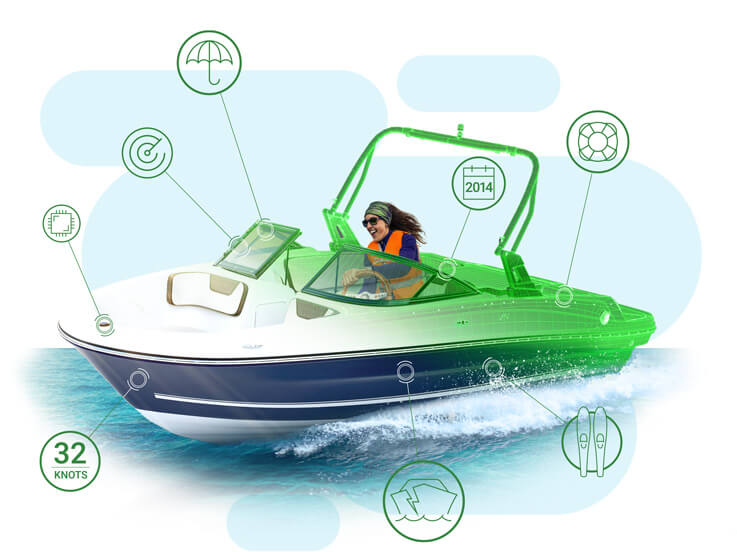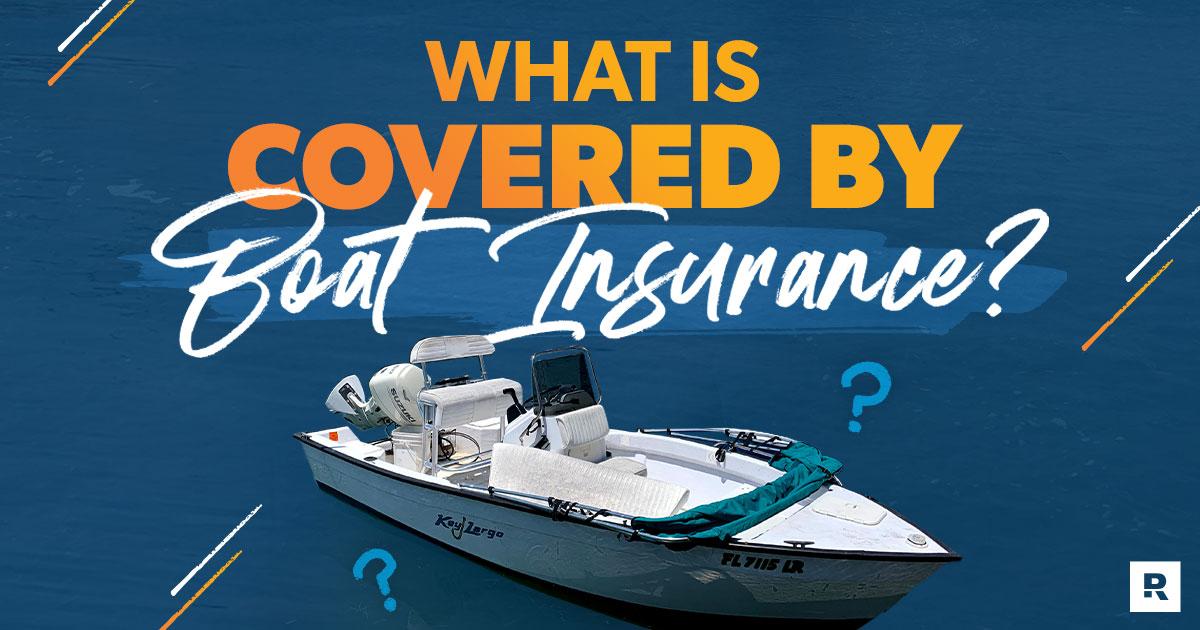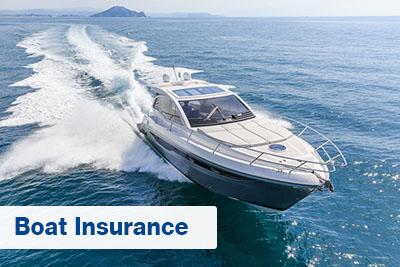When it comes to owning a boat, the thrill of being on the open water is often matched by the importance of safeguarding your investment. Just as homeowners and car owners protect their assets with insurance, boat owners need to understand the ins and outs of marine insurance to ensure peace of mind while navigating the waves. In this article, we’ll delve into the crucial aspects of boat insurance, breaking down key coverage details and helping you make informed decisions. Whether you’re a seasoned sailor or a first-time boat owner, understanding the nuances of boat insurance is essential for protecting yourself, your vessel, and against unforeseen incidents on the water. Let’s explore the various types of coverage available, what they mean for you, and why having the right policy can make all the difference in your boating experience.
Table of Contents
- Understanding the Different Types of Boat Insurance Policies
- Essential Coverage Options Every Boat Owner Should Consider
- Factors That Impact Your Boat Insurance Premium
- Tips for Choosing the Right Policy for Your Needs
- Final Thoughts
Understanding the Different Types of Boat Insurance Policies

Boat insurance can be broken down into several key types, each designed to meet specific needs and preferences of boat owners. The most common types include liability coverage, which protects you from claims resulting from injuries or damage to another person or their property, and hull insurance, that covers physical damage to your boat itself. Additionally, medical payments insurance offers coverage for injuries sustained by you or your passengers, regardless of who is at fault. For those who want protection against theft or vandalism, comprehensive coverage is essential, as it addresses non-collision-related incidents.
Another important type is uninsured/underinsured boater coverage, which safeguards you in case of an accident where the other party lacks sufficient insurance. Furthermore, there are specialized policies like fishing equipment insurance and towing coverage, which cater to specific boating activities and needs. Understanding these options allows you to tailor your insurance policy according to your boating habits and risks. Here’s a brief overview of the different types:
| Type of Insurance | Coverage Includes |
|---|---|
| Liability Coverage | Injury or damage claims to others |
| Hull Insurance | Physical damage to your boat |
| Medical Payments | Injuries to you or passengers |
| Comprehensive Coverage | Theft and vandalism protection |
| Uninsured Coverage | Protection against uninsured boaters |
| Specialized Policies | Insurance for fishing gear, towing, etc. |
Essential Coverage Options Every Boat Owner Should Consider

When it comes to safeguarding your investment on the water, selecting the right coverage is paramount. Liability insurance is one of the most critical components, protecting you against legal claims arising from accidents involving injury or property damage to others. This coverage ensures that you are not left financially exposed in the event of an onboard incident. Furthermore, consider adding physical damage coverage, which offers protection for your boat in case of accidents, theft, or severe weather. This type of policy can cover repairs or the replacement value of your vessel, giving you peace of mind as you sail.
Moreover, many boat owners may benefit from the inclusion of uninsured/underinsured boater coverage, which shields you financially if you’re involved in an accident with someone who has insufficient insurance. Additionally, personal property coverage protects your belongings on board, such as fishing gear, electronics, and safety equipment, ensuring that your essential items are also covered during your voyages. To help visualize these options, here’s a quick comparison table outlining the essential coverage types:
| Coverage Type | Description |
|---|---|
| Liability Insurance | Covers legal claims for injury or damage to others. |
| Physical Damage Coverage | Protects against damage to your boat, including theft. |
| Uninsured/Underinsured Boater Coverage | Protects you if involved in an accident with an underinsured party. |
| Personal Property Coverage | Covers belongings on the boat, such as gear and electronics. |
Factors That Impact Your Boat Insurance Premium
When it comes to determining your boat insurance premium, several factors come into play that can significantly affect the cost. Type of boat is a primary consideration; for instance, a luxurious yacht generally incurs higher premiums than a small fishing vessel. Additionally, age and condition of the boat are crucial; older boats may present more issues, leading to increased risk for insurers. Other key factors include:
- Geographic location: Areas prone to hurricanes or severe weather typically result in higher rates.
- How and where you use your boat: Frequent use in high-risk areas like busy marinas can raise costs.
- Coverage amount and deductible: Higher coverage limits or lower deductibles can significantly hike premiums.
Moreover, your boating experience matters; individuals with a history of accidents or claims might face heightened premiums. Additionally, your credit history can influence your rates, as a good credit score often correlates with lower risk to insurers. Below is a simple table illustrating how various factors can change premium costs:
| Factor | Impact on Premium |
|---|---|
| Type of Boat | High-end boats increase costs |
| Geographic Location | Higher rates in risk-prone areas |
| Claims History | Previous claims lead to higher costs |
Tips for Choosing the Right Policy for Your Needs
Choosing the right boat insurance policy can seem daunting, but breaking it down into manageable considerations can greatly simplify the process. Start by assessing your specific needs based on how and where you use your boat. Factors to evaluate include the type of boat you own, its value, and the body of water you frequent. Coverage limits and deductibles are essential elements to understand, as they directly impact your financial responsibility in the event of a claim. Make sure to consider the following:
- Usage frequency: How often do you take your boat out?
- Storage methods: Do you keep it in a marina, at home, or indoors?
- Additional activities: Will you use the boat for fishing, recreational purposes, or charters?
Next, compare quotes from multiple insurers to gain a better understanding of the market. Pay attention to the types of coverage offered, not just the price. Recommended coverage types include liability insurance, which protects against injury or damage to others, and comprehensive coverage, which safeguards against theft, vandalism, and natural disasters. You may also want to consider optional add-ons such as towing and roadside assistance for added peace of mind. Here’s a quick overview of common policy features:
| Coverage Type | Description | Consideration |
|---|---|---|
| Liability Coverage | Covers damages or injuries to others | Essential for all boaters |
| Physical Damage | Protects your boat from damage | Varies with boat type |
| Uninsured Boater Coverage | Protects against uninsured vessels | Highly recommended |
Final Thoughts
As we come to the end of our exploration of boat insurance, we hope this article has shed light on the essential coverage details that every boat owner should understand. Navigating the world of boat insurance can be daunting, but knowing the key components—such as liability, physical damage, and medical payments—can empower you to make informed decisions that best suit your needs.
Whether you’re a seasoned sailor or a newcomer to the boating community, having the right insurance coverage is crucial to protecting your investment and ensuring peace of mind on the water. Take the time to assess your specific requirements and consult with insurance professionals to find the best policy for your boating lifestyle.
Remember, the open waters can be unpredictable, but with the right preparation and understanding of your coverage, you can sail confidently into every adventure. Thank you for reading, and we wish you safe and enjoyable journeys ahead!



